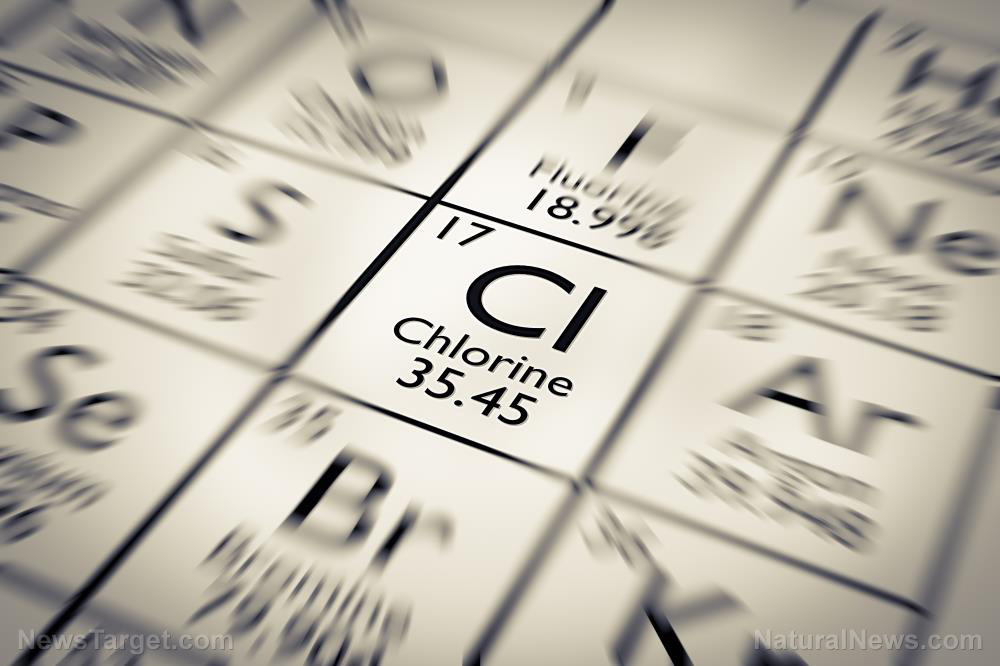CT scans, often a lifesaving medical tool, also triple childhood leukemia cases when overused in children
11/21/2025 / By Lance D Johnson

In the frantic, fluorescent-lit world of a hospital emergency room, the CT scanner hums with an aura of definitive power. It is the modern oracle, a doughnut-shaped machine that promises to peer through skin and bone to reveal the hidden truths of a failing body. For a patient presenting with a sudden, debilitating headache or the telltale signs of a stroke, its rapid diagnosis can be the difference between life and death. Yet, a growing body of evidence suggests this form of radiation seeds future cancers in a portion of the millions of patients who pass through its ring each year. Children who routinely receive CT scans are at greatest risk – triple the risk – of receiving a leukemia diagnosis.
Key points:
- The use of head CT scans in U.S. emergency departments has doubled since 2007, reaching nearly 16 million in 2022.
- While critical for emergencies, a significant portion of these scans are deemed medically unnecessary, exposing patients to harmful radiation without clear benefit.
- Radiation exposure from CT scans is cumulative, and repeat scans, particularly in children, can triple the risk of developing leukemia and brain cancer later in life.
- Researchers project that CT scans performed today could be responsible for tens of thousands of future cancer cases, with adults aged 50-59 bearing the highest burden.
- Disparities in access are also evident, with Black, Medicaid, and rural patients less likely to receive a scan when its medically necessary, potentially leading to missed diagnoses with poor health outcomes, including death.
A diagnostic double-edged sword
The computed tomography, or CT, scan is a technological marvel that combines a series of X-ray images taken from different angles to create cross-sectional slices of the body. It is, without question, indispensable. For a neurologist facing a potential stroke patient, where every minute of delayed treatment means the loss of millions of brain cells, a head CT is non-negotiable. It can quickly reveal a bleed in the brain or rule one out, directing treatment down a path that can save function and life. The problem, experts warn, is one of scope and scale.
The study from the Yale School of Medicine reveals a healthcare system that has developed a powerful reliance on this tool, applying it to a widening array of complaints where its necessity is less clear. The rate of head CTs performed in emergency rooms climbed from 6.7 percent of all visits in 2007 to 10.3 percent in 2022, a expansion that outpaces population growth and suggests a shift in diagnostic culture.
Dr. Layne Dylla, the lead author of the recent study, frames the tension with precision, stating, “Head CT scans are a critical tool for diagnosing neurological emergencies, but their growing use raises concerns about cost, radiation exposure and delays in the emergency department.” It is a double-edged sword; the same action that can save a life today might, through the invisible accumulation of ionizing radiation, compromise another tomorrow.
The latent price for the most vulnerable
A single CT scan is not, in itself, a death sentence. The danger lies in the cumulative effect, the way the body stores the insult of radiation from each subsequent scan, much like a sponge slowly soaking up water until it is saturated. For children, whose cells are dividing rapidly and who have many more years of life ahead for cellular damage to manifest as cancer, the risk is profoundly magnified. Their bodies are more sensitive to radiation, and the same dose that would be distributed over a larger adult body is concentrated in their smaller frames.
A 2012 study published in The Lancet found that children who received between five and ten CT scans before the age of 15 saw their risk of leukemia triple and their risk of a brain tumor increase significantly. While the baseline risk of childhood leukemia is about one in 2,000, multiple scans can bump that statistic to a daunting one in 600. These are not abstract numbers; they represent real children who, years after a trip to the ER for a head injury, face a entirely different and more insidious battle. The cancer caused by this diagnostic radiation does not appear in days or weeks. It incubates, sometimes for a decade or more, creating a ghostly link between a past medical event and a future diagnosis that few would think to connect.
An uneven landscape of risk and access
The distribution of this risk paints a complex picture of the American healthcare system. The Yale study found that patients 65 and older were the most likely to receive a head CT scan, accounting for over a third of all such scans. Their highest rate reached 20.6 percent in 2022, a statistic that reflects the medical complexities of an aging population but also raises questions about the aggressive workup of every elderly patient with a complaint. Because of their numbers and the sheer volume of scans they receive, adults aged 50 to 79 are projected to bear the brunt of radiation-induced cancers, with a staggering 93,000 future cases expected in the 50-59 age group alone. The graph from the study makes a critical distinction: while the cancer risk from a single scan is highest for a vulnerable infant, the massive number of scans performed on adults means they will account for the overwhelming majority of cancer cases.
Simultaneously, the research reveals troubling disparities. Black patients were 10 percent less likely to receive a scan than white patients, and those on Medicaid were 18 percent less likely. This gap, partly driven by the fact that Medicaid reimbursements often fall below the actual cost of the procedure, hints at a dangerous undercurrent.
While overuse is a clear problem, underuse can be just as deadly, leading to missed strokes, undiagnosed bleeds, and catastrophic delays in treatment. Patients in rural hospitals were 24 percent less likely to get a head CT, potentially leaving them without access to a critical diagnostic tool during a neurological emergency. Dr. Dylla’s comment gets to the heart of this paradox, noting the “tension between underuse of scans, leading to missed diagnosis, and overuse, resulting in radiation exposure and additional financial and patient care strains.”
The challenge, then, is not to simply stop using CT scans, but to wield them with far greater precision and equity, ensuring they are available to those who truly need them while protecting others from unnecessary harm. The path forward requires a recalibration, a conscious effort to move away from defensive, protocol-driven medicine and toward a more thoughtful, patient-centered approach where the long-term consequences of today’s diagnostics are given their due weight.
Sources include:
Submit a correction >>
Tagged Under:
brain damage, brain function, brain tumors, cancer risk, CT scans, diagnostic tests, emergency medicine, Health Disparities, healthcare costs, healthcare policy, leukemia, medicaid, medical ethics, medical imaging, neurology, overtreatment, patient safety, pediatric cancer, radiation exposure, rural health
This article may contain statements that reflect the opinion of the author




















